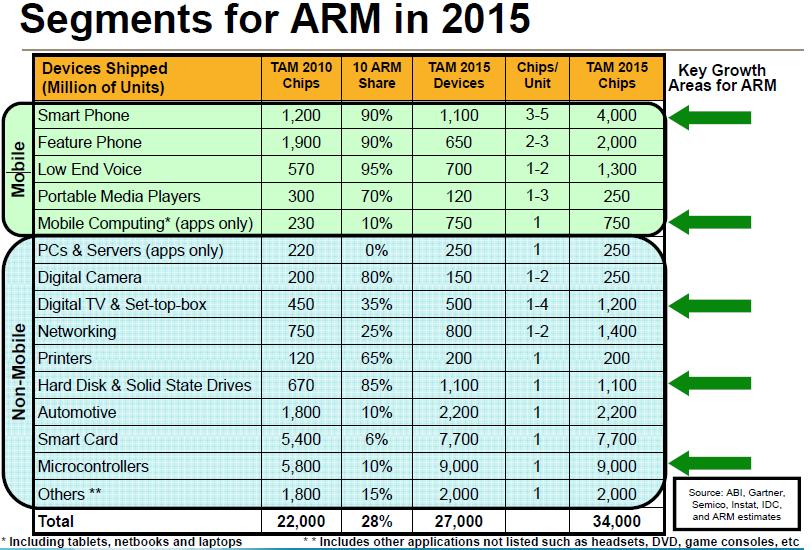ARM holdings, the company that license chip architecture hopes to grab the PC and server CPU market by 2015. This was disclosed at ARM Holdings earnings conference call earlier this week.
Currently, Microsoft and NVIDIA are committed in supporting the ARM architecture in software and processor design. This seems to be the initial spark and we will probably see more players coming on board.
As PC and mobile devices are blurring, the chances of ARM being able to take on PC market is not an impossible mission.
There is a blurring between computers and smartphones and that’s helping ARM’s very strong presence in smartphones and helping us get into computing. But at CES there were some great brand names and the whole show was indeed a showcase for lots of ARM technology and showed ARM very strongly positioned, as the consumerization of the Internet that we talk about takes place over the coming years.
This is all about ARM in computing and we just thought it would be worth taking a moment or two to talk about the Cortex-A family of processors. And why Cortex-A in computing? You can see there has been a lot of talk about some new areas of computing, where we have zero market share today but where we hope to gain market share in the future.
As we move across to mobile computers, then people want very thin, lightweight products, with a long battery life. ARM technology is great for that, saving space, saving power and, at the same time, bringing an ecosystem from the smartphone space, an ecosystem around PCs and smartphones are becoming much more of a single ecosystem.
In servers, you can see the Cortex-A processors scaling to deliver higher levels of performance. It’s — more use of the Internet drives more server usage. ARM is very attractive in terms of power savings and potentially cost savings going forward.
The ARM Cortex-A processors support multi-processing and that delivers the high levels of performance required for server applications. And in this space we have zero market share today and we have an ecosystem that we need to develop. So this is very much a potential opportunity and it’s market growth in the out years.
And similarly I would say in desktops, where there’s a very established, capable and competent incumbent architecture there and so ARM presence in that space is probably some way out. But certainly, as our performance — as the performance of ARM processors increases over the years and as the ecosystem develops, with companies like Microsoft supporting the ARM architecture, then that’s clearly a market opportunity for the future

